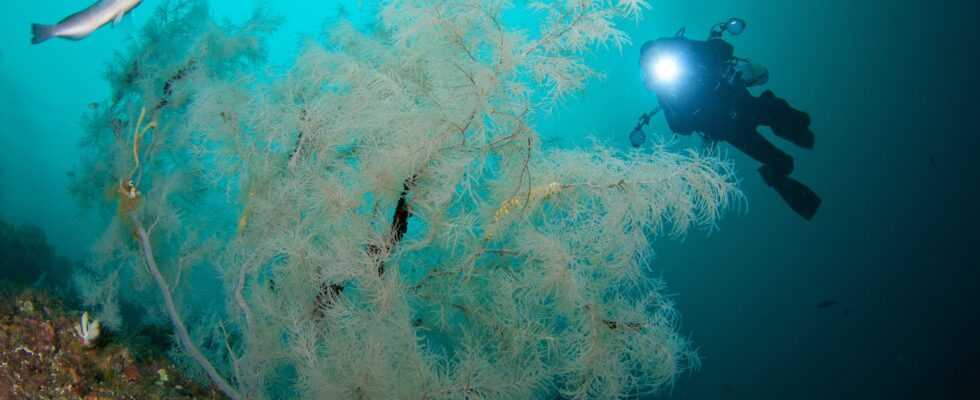For the first time since systematic observations began, extensive mass bleaching of sponges has occurred in New Zealand’s Fiordland – a phenomenon that has so far been known primarily from overheated coral reefs. Up to 95 percent of all sponges are affected in some areas, scientists led by James Bell from the Victoria University of Wellington report in the Guardian. This is probably due to an extreme local heat wave in the Pacific: the average water temperatures in April were the highest in the region that have been measured so far. The length and intensity of the heatwave off the southwest coast of the South Island surpassed any event in at least 40 years.
Normally, the particularly affected sponges are a deep chocolate brown, but the diving scientists are now finding predominantly white, faded specimens. “Such damage has never been observed in New Zealand, and there have been few reports of such incidents in cold waters internationally,” Bell said. The working group estimates that there are hundreds of thousands of affected specimens. There are similar reports of sponge bleaching off the Tasmanian coast, Bell says.
So far, sponges have been considered relatively robust sea creatures that are more tolerant of changes in the ocean than corals. But that could change. »This makes it clear what kind of climate crisis we are dealing with. There are so many species in New Zealand and we don’t know what their heat tolerance is,” Bell told the Guardian.
It is unclear whether the sponges suffer directly from overheating or whether the unusual temperatures make the animals more susceptible to illness due to increased stress. It is also still questionable whether and when the animals will be able to recover. Sponges are among the key species in these marine ecosystems, building entire reefs.
